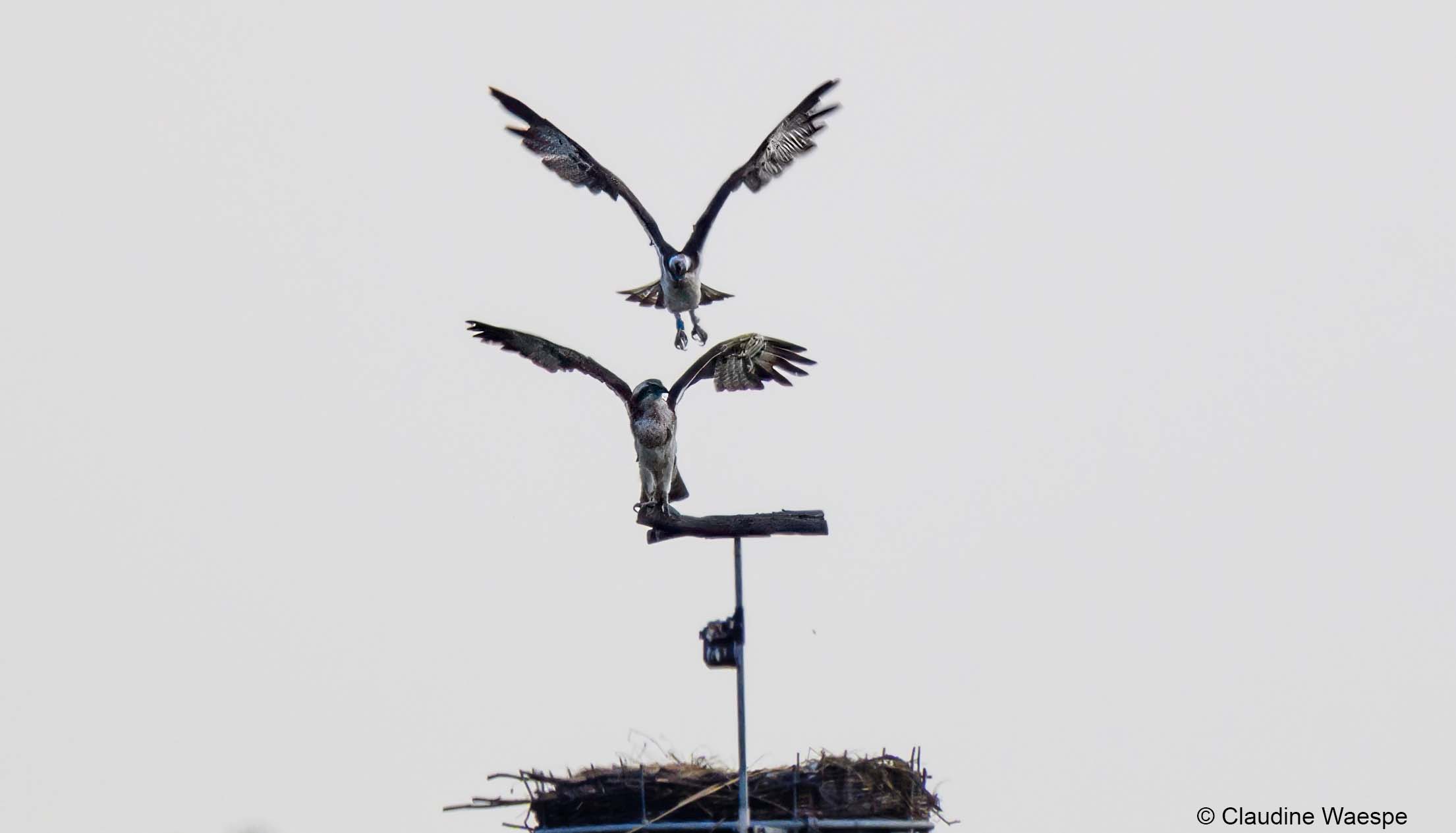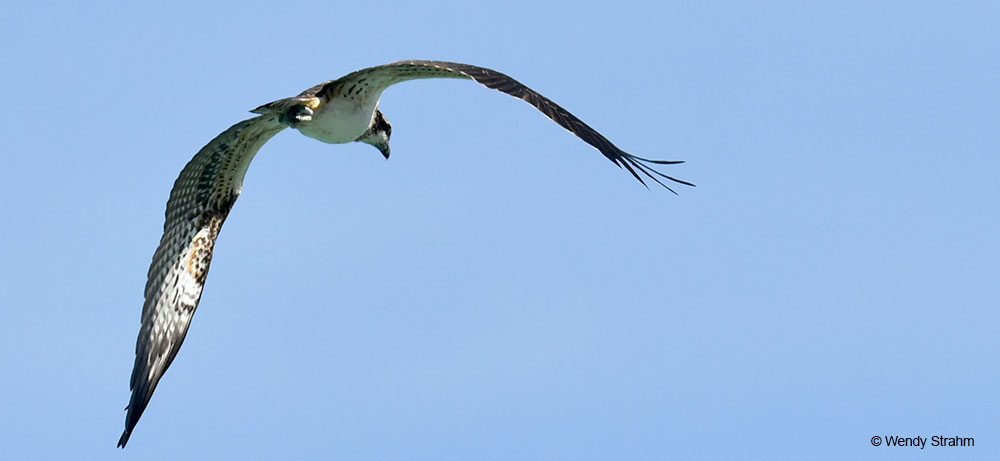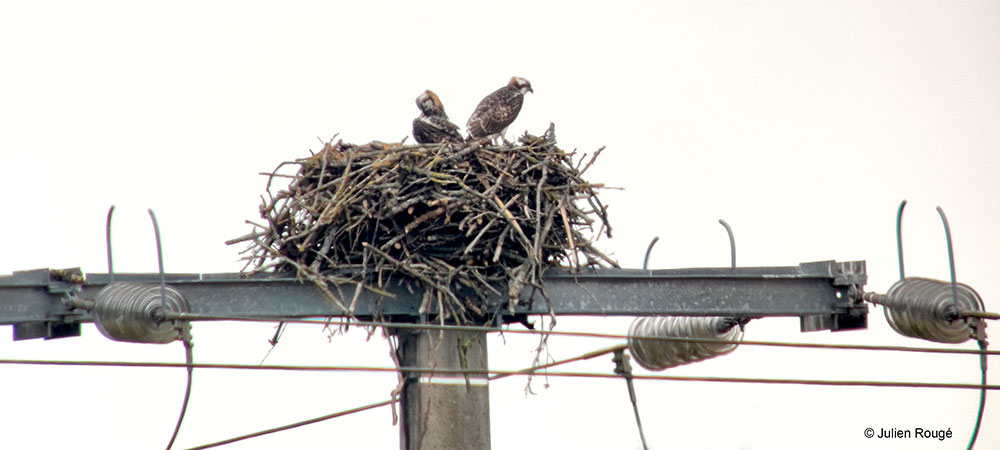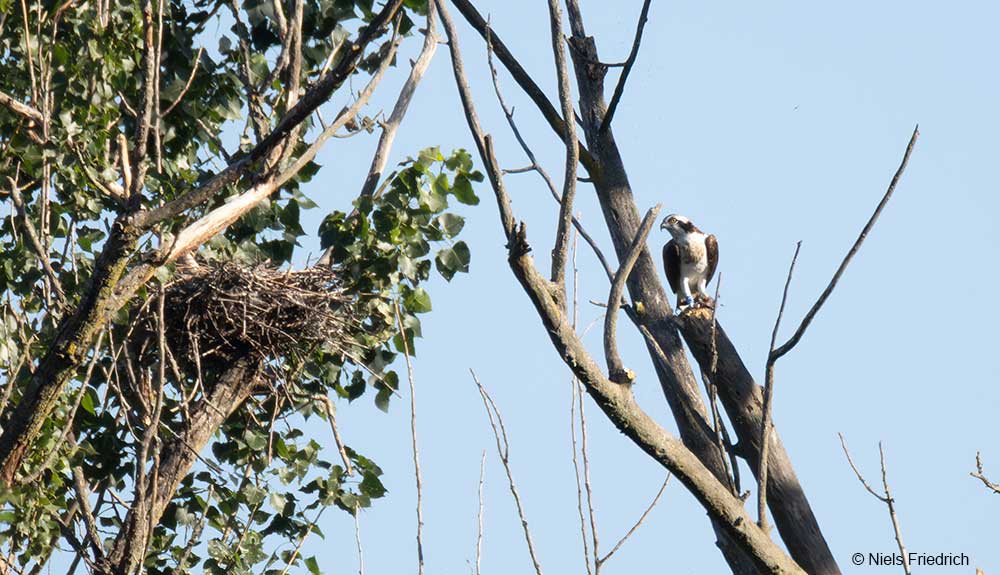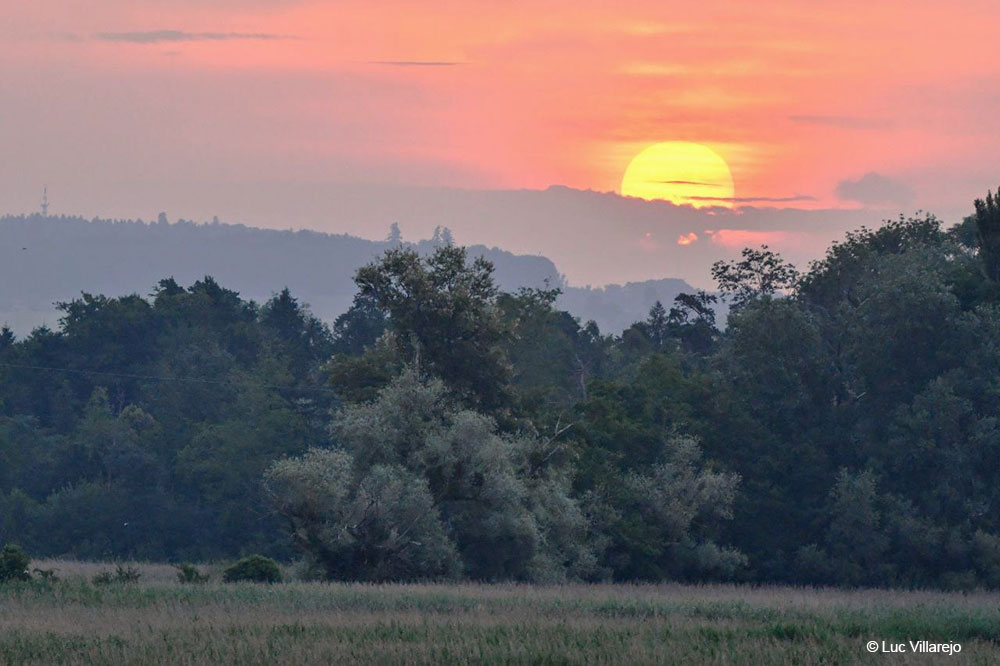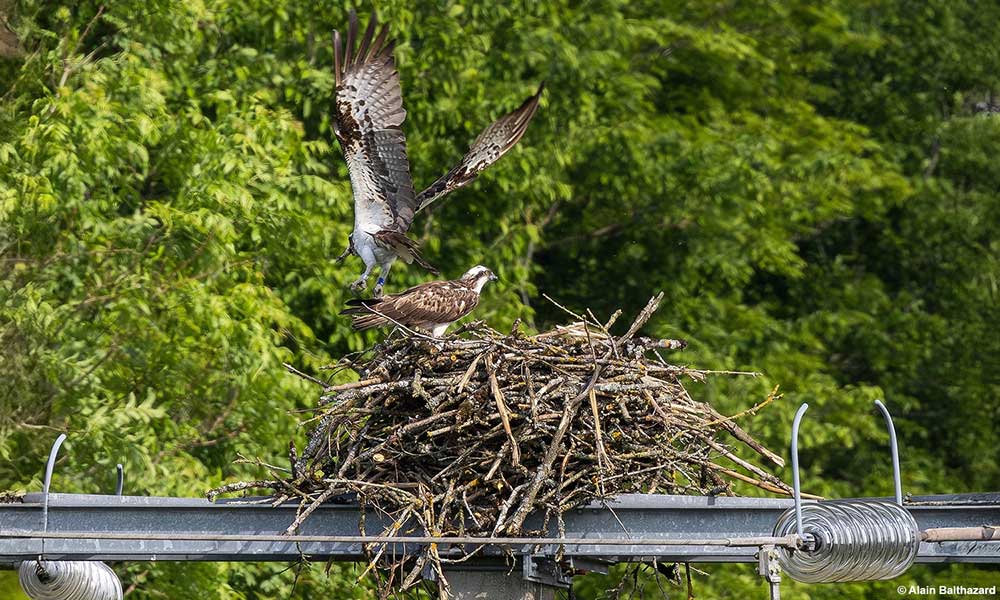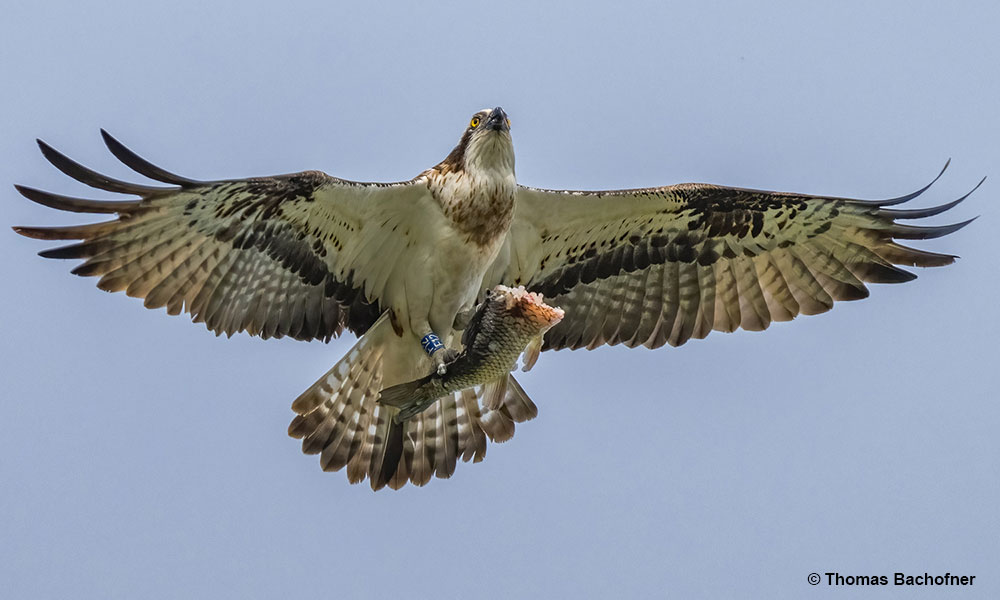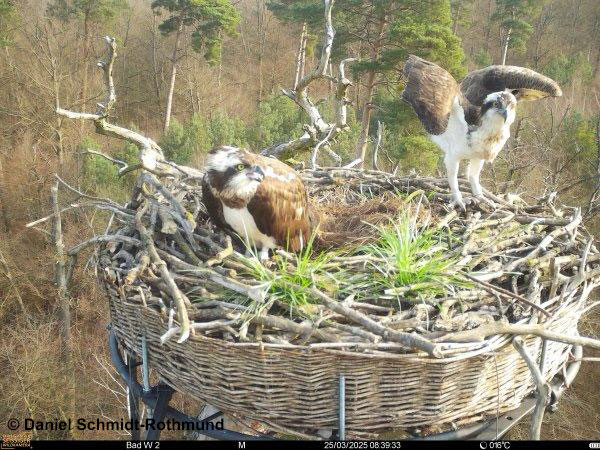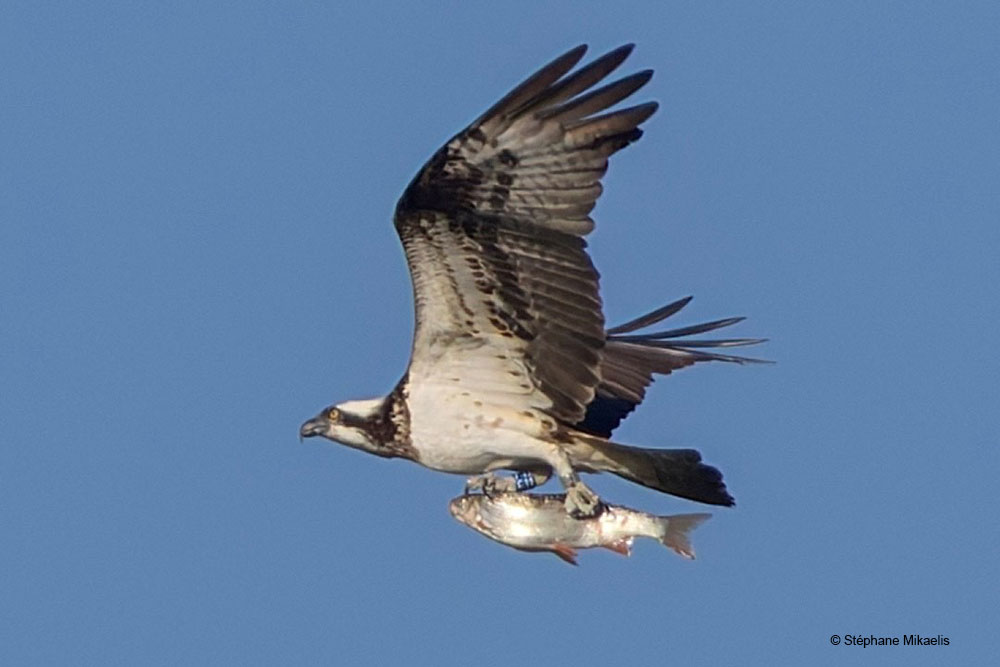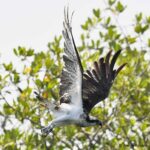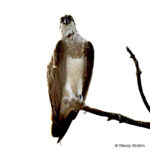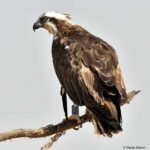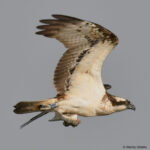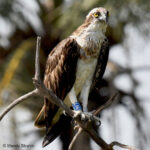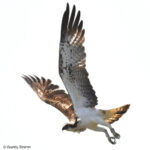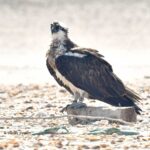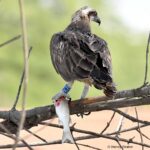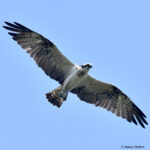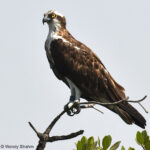The 2025 season is now over and our territorial Ospreys have all headed south. Racine F29 was the first to leave, being last seen at his nest on August 31, nearly the same date as last year. Olympe F28 and Arthur F12 then went into extra time. While in 2024 they had both left on September 6, this year Olympe was last seen on September 17, and Arthur on the 18th. Since peak migration of more northerly Osprey crossing over Switzerland occurs in September, this longer stay gave them the opportunity to meet a few more birds passing through. Indeed, on the last day when Olympe was observed, an unringed adult spent the morning fishing and resting in his territory. But when Olympe showed up, the visitor flew off, circling very high before disappearing towards the south-west at 10:30, while Olympe remained perched. However, he then left in the same direction half an hour later. Olympe and Arthur probably delayed their departure due to strong south-westerly winds during the first half of September. Racine had left before that period, when there was a moderate north-easterly “bise” wind.
While Olympe as well as Racine had paired with immature females during the summer (photo of Racine with his mate above), Arthur waited until the end of his stay before meeting one as well. It seems that she was hanging about from at least August 31 to September 6, but since she was very discrete, she may have been around for longer.
For the females, Mouche (PR4) fledged two chicks in Moselle (F), her fifth successful reproduction since 2021. The last time that Dominique Lorentz observed her near her nest was on August 12. He then saw one of her young return to the nest on August 16, and photographed the male for the last time on September 3. As for Pistache (F11), she successfully fledged two chicks in Marne (F). While not knowing exactly when she left the area, Julien Rougé tells us that an adult (most likely the male) and the 2 juveniles were last seen at the nest on August 10. Finally, after Chronos failed in her third reproduction in Germany (Baden-Wurttemberg), we don’t know when she left. However, Daniel Schmidt noted that she and her partner were still in the region at the end of July.
Now that all of “our” birds have gone, the suspense has started, and we are already eagerly waiting for their return in six months’ time!

